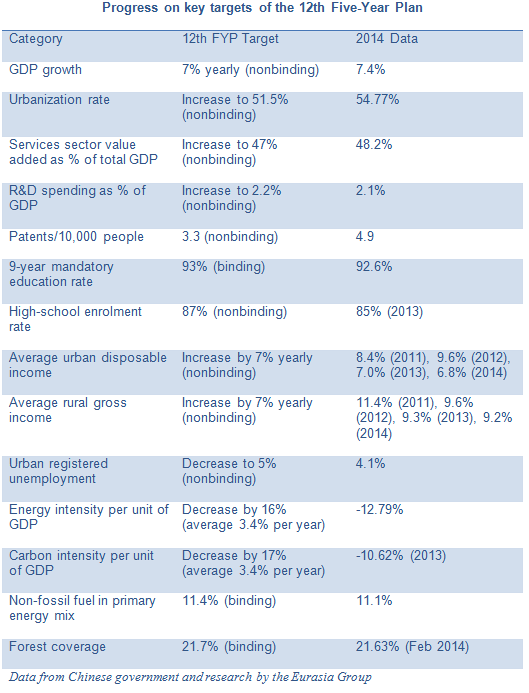Towards the 13th Five-Year Plan
- By Heiko Khoo
 0 Comment(s)
0 Comment(s) Print
Print E-mail China.org.cn, November 12, 2015
E-mail China.org.cn, November 12, 2015
China's Five-Year Plans remain the beating heart of its socio-economic system. The plans organize state entities to elaborate long-term objectives, realize concrete tasks and mobilize the required resources. The plan process encourages experimentation, multi-agency collaboration and the refinement of checks and balances. And, through its implementation, it shapes the overall market conditions within which the private sector operates.
The current 12th Five-Year Plan (2011-2015) has seen a rise in urban employment of approximately 13 million a year,exceeding the target of 10 million. Urban wages are three times the level of rural incomes and they are rising at well above the rate of inflation. This year, growth in manufacturing for export slowed while the service sector grew. Services now contribute more to GDP than manufacturing; as services are more labour-intensive than manufacturing, they absorb surplus labour more easily. This is needed as a further 100 million rural migrants are expected to move to the cities before 2020.
China's process of urbanization is often portrayed as being synonymous with the growth of the middle class. This class is commonly identified as the bedrock of capitalism and democracy. In truth, as rural migrants move to the cities, the overwhelming majority become members of the working class. They are wage labourers whose income is supplemented by the public provision of infrastructure, housing and services.
Overall, the 12th Five-Year Plan is on course to meet nearly all of its objectives. This is shown in the chart below.







Go to Forum >>0 Comment(s)